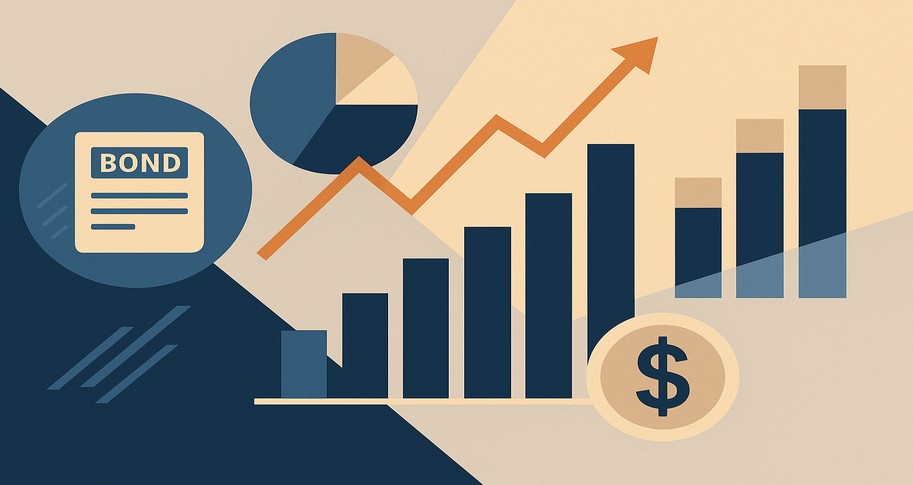
The public not only expects transparency from corporate and political entities but often demands it. Because CEO-directed political spending can be motivated by self-interest (from buying access to politicians and obtaining political appointments, to supporting politicians that are in line with their own personal ideological proclivities, etc.), these costs can negatively impact firm performance and damage stakeholder trust. In fact, they can become examples of agency costs, which are the costs that arise from conflicts of interest between shareholders and company representatives; agency costs arise when the agent (company representatives) does not act in the best interest of the shareholder.
By examining CEO political ideology and PAC expenditures, “Transparent politics: Political ideology, lobbying and firm performance,” Walton College’s Jason Ridge, Amy Ingram (Clemson University) and Mirzokhidjon Abdurakhmonov (University of Nebraska-Lincoln) explore how corporate political transparency (CPT) helps firms accrue value, benefits, and practical applications for firm performance. CPT denotes the extent a firm discloses its political activities, including political contributions, lobbying, participation in industry groups, public stances on political or regulatory issues, and also the manner the company reports this information to the public.
The researchers combine a stakeholder management perspective, which looks at how business decisions affect a variety of stakeholders (employees, customers, suppliers, investors, communities) and not just shareholders, with a focus on political marketplaces and agency costs in their research. They examine how CPT influences the relationship between firm performance and corporate political activity, especially with regard to PAC contributions and lobbying.
What Drives Political Spending?
The CEO’s political ideology and the firm’s political activities significantly shape corporate political activity (CPA). For example, firms may provide resources, information, and political support to policy makers, legislators, and regulators to influence the political marketplace and secure favorable policy considerations for their firms. Since these actions may create the perception (and the implicit possibility) of corporate purchasing of public policy, many stakeholders have called for greater political transparency. This call for transparency has helped lead the public to understand the connection to the government, its commitments, and its ability to monitor the role of America’s biggest companies and their influence in Washington.
As more people have seen how vast corporate political influence is, it has become pretty safe to say that CPT is not going anywhere. Understanding the positive and negative consequences of CPT has never been more important.
Berkshire Hathaway, for example, has continually objected to being transparent about the firm’s political activities because “in addition to creating unnecessary administrative costs, [it] could expose Berkshire subsidiaries to competitive harm without commensurate benefit to our shareholders.” By suggesting that voluntary explication of a firm’s political strategy would provide competitors with information, Berkshire fears that these disclosures could harm the firm.
But on the other end of the spectrum, CPT can help firms manage the impression of stakeholders and shareholders alike. For example, in a firm with a high level of transparency, executives may be scrutinized about how their political expenditures actually benefit the firm. On the one hand, this transparency may reduce the need for shareholder activism by pre-empting any concerns. On the other hand, it can enhance governance, lower the likelihood of misuse of political funds, and improve the firm’s lobbying activities.
Governance Equals Results
The fact that CEO ideology influences CPA or that CPA can be misaligned with shareholder interests may be somewhat intuitive. What makes Ridge and his coauthors’ study useful for firms is how it shows that CPA may harm performance if driven by personal motives. Their study demonstrates that transparency is not simply a good idea, but that transparency provides performance benefits for firms.
When CPT levels are high, it moderates political spending by executives. For example, if there’s low levels of transparency, Ridge and his coauthors show a high level of correlation between executives’ ideology and beliefs and the PACs they support. In short, if an executive is invested heavily in the ideology of one party, and there’s little to no oversight over their political spending, then they’ll give to those PACs even if the benefits to the firm are negligible. On the other hand, when transparency is high, that level of oversight and disclosure reduces executives’ ability to authorize political spending based on personal preferences. CPT acts as an important governance mechanism and makes sure spending aligns with shareholder interests.
While greater CPT by firms assists in the management of external stakeholders, that is not the only benefit that Ridge and his coauthors found. At firms with low levels of transparency, their lobbying may not yield good results for the firm or may even harm the firm’s efforts. This harm or low return on investment likely stems from the agency costs mentioned previously, namely the potential misalignment between the CPA spending and firm benefits or values. For firms with a high level of transparency, the researchers found a stronger positive relationship between lobbying and performance: when firms are transparent about their spending, lobbying is more likely to yield performance gains. In this instance, reduced agency costs and a better alignment between firm interests and political activities directly leads to better financial outcomes. This higher ROI from lobbying efforts results from the positive signals regarding corporate ethical behavior that CPT sends. Simply put, “firms with good reputations have easier interactions with government officials.”
Transparency and governance that high CPT requires has benefits beyond financial performance and government-firm relationships. This is because “transparency fosters trust and employee fit” within employees and other internal stakeholders. This trust can also spread out to customers and the local community because both stakeholders know how the firm’s political spending affects them or aligns with their values.
How Transparency Can Benefit Your Firm
It has become commonplace for large firms to engage in political spending of some sort; the question of the value and return of this spending is one that every firm has to answer. Firms need to understand how there are more than just firm-only benefits to political spending. Yes, shareholder activists may file resolutions demanding CPT that pressures firms to adopt policies that ensure their CPA supports business objectives rather than the personal interests of a few in the firm. But the benefits for CPT go beyond managing instances of shareholder activism.
CPT also sends positive signals beyond the boardroom. It demonstrates a commitment to ethical behavior to regulators, employees and other internal stakeholders, policymakers, communities, and to society at large. And while that transparency can carry with it some risks and arm competitors with information, it also carries with it myriad benefits. As the researchers demonstrate in their study, CPT can reduce agency costs, increase the efficacy of the firm’s lobbying efforts, signal ethical governance and the reduced risk of doing business with the firm, act as an in internal control mechanism, and increase public trust.
What Ridge and his coauthors have shown is that from a practical perspective, firms should strongly consider incorporating CPT into corporate governance. It’s not just about the moral high ground and building goodwill — although those are important — it’s also about minimizing uncertainty, driving positive reactions from investors, and more efficient allocation of resources.
 Victoria Hernandez is a second-year graduate student in news narratives at the University
of Arkansas School of Journalism. She holds bachelor’s degrees in English and journalism
with minors in history and gender studies. Her writing experience includes writing
for The Arkansas Traveler, serving as editor-in-chief at Hill Magazine, and interning
at KUAF, The University of Arkansas Press, and The Gayly. She currently serves as
the Director of Strategic Media and Collaboration and as a Gender Studies graduate
assistant.
Victoria Hernandez is a second-year graduate student in news narratives at the University
of Arkansas School of Journalism. She holds bachelor’s degrees in English and journalism
with minors in history and gender studies. Her writing experience includes writing
for The Arkansas Traveler, serving as editor-in-chief at Hill Magazine, and interning
at KUAF, The University of Arkansas Press, and The Gayly. She currently serves as
the Director of Strategic Media and Collaboration and as a Gender Studies graduate
assistant.




